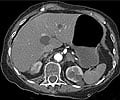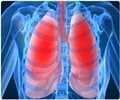New insights on the influence of tobacco smoke in utero was gained by the Leipzig Helmholtz Center for Environmental Research.

Former studies have already proven that smoking during pregnancy can harm the unborn child: Newborns from smoking mothers have shown low birth weights and impaired lung functions; later on in life respiratory diseases, diabetes type II, asthma or cardiovascular diseases were also more common. However, the exact molecular mechanisms and processes that are behind such developments still struggle researchers.
For this reason, Dr. Gunda Herberth and Dr. Irina Lehmann from the UFZ decided to address the relatively recent research area of microRNA. From the early 1990´s these cell components started to become more and more of a focus in molecular and cell biology. In the meantime, for humans more than 1,200 different short, single-stranded RNA molecules have been named, some of them playing an important role in immune response. Among others, they have a considerable influence on the differentiation of regulatory T cells (Treg cells), which in turn prevent an overactive immune system and thus autoimmune diseases. If there are insufficient Treg cells or if their function is impaired, the self-regulatory function of the immune system will be reduced, possibly resulting in allergies.
To investigate the relationship between smoking mothers during pregnancy on the one hand and their children´s risk of developing allergies on the other, the scientists from Leipzig examined microRNA-223, microRNA-155 and regulatory T cells – not only in the blood samples of pregnant women (36 weeks pregnant) but also at birth in the cord blood of their babies. At the same time, questionnaires were filled out and urine samples of the pregnant women were tested to substantiate the effect from exposure to tobacco smoke and/or from volatile organic compounds resulting from smoking. From the pool of mothers participating in the LINA-study, 315 mothers (6.6 percent of whom were smokers) and 441 children were consulted in these investigations.
The focus was on miR-223 and miR-155, because their role in regulating T cells had already been proven. "What we are now interested in finding out", explains Dr. Gunda Herberth , "is whether or not these microRNAs link exposure to smoke, regulatory T cells and the risk of developing allergies."
By measuring the concentration of these microRNAs as well as the number of regulatory T cells in maternal and cord blood it could be shown that a high exposure to inhaled volatile organic compounds (VOCs) associated with tobacco smoke coincides with high values for miR-223. At the same time it was also found that increased values for maternal and umbilical cord blood miR-223 correlate with low regulatory T-cell numbers. Finally, it could be shown that low regulatory T-cell numbers in umbilical cord blood was an indication that children exposed to tobacco smoke were more likely to develop an allergy before the age of three compared to those children with normal values for miR-223 and Treg cells. Furthermore, the probability of developing eczema was almost twice as high for these children.
Source-Eurekalert
 MEDINDIA
MEDINDIA




 Email
Email










